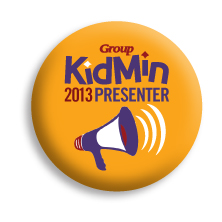
What if I shared with you that you have the power to change interactions between parents and children in single-parent and blended-family homes?
What if this I told you it is a suggestion that single parents and blended parents can incorporate very easily into their schedule?
What is this miracle I’m talking about that will change children’s lives and help single dads and moms and parents in blended families shine in the eyes of their children?
It is something so simple that many parents with their overstressed, chaotic lives have simply forgotten about. It is sitting down as a family and eating a meal together.
Past research has shown that sharing mealtime together at least five times a week can impact children in positive ways. Most of the research was done in two-parent homes, but I know from my own experiences and observations that helping single parents realize the importance of family meals can change many outcomes in these homes.
Some of the positive outcomes might prove to be more important in single-parent homes and blended-family homes because many children live in two homes in shared custody. Other children visit the other parent on weekends and summer and holiday vacations. You might say that many single parents only get half as much time with their children as adults in two-parent homes where divorce hasn’t occurred.
Single parents and blended-family parents need opportunities to reconnect with their children, especially when the children return home from visitation. They need times to model how they want their children to act. Remember they must share their children with other people in separate homes and possibly even stepparents who influence their child.
Positive outcomes include
- Children develop strong relationships with the parents.
- The parents have opportunities to share their cultural heritage and family traditions.
- The family is more likely to talk about things and work out solutions together.
- Single moms and dads are more likely to share parts of their day with the children.
- Parents provide role models for:
- Social skills
- Table manners
- Positive work ethic—when discussing their workday and job
- Integrity—when discussing their interactions with friends, neighbors, and co-workers
- A spiritual life and a faith walk
- Kids in families that eat together are less likely to get involved in drug and alcohol.
- Parents are more likely to be in tune with what is going on in the children’s life.
- Eating together and fellowshipping with family help create a feeling of safety and contentment in the home.
- Meals are more likely to be nutritious.
- For young children, shared family meals can aid in increasing language development.
- Elementary-age and teenage children who eat together in a family unit do better in school.
- The children have an opportunity to reconnect with the single parents.
What you can do
- Share with your blended families and single parents the positive outcomes in this article.
- Encourage the parents to include the children in meal planning, preparation, and cleanup. All of these activities will help the children feel like part of the family unit.
- Provide recipes for easy-to-make dishes.
- Encourage church members to invite a single-parent family to share a meal in their home.
- Bring up shared mealtimes in Bible lessons.
- Encourage kids to share with others about their family mealtimes.
- Encourage single parents to require the children to put away the electronics at mealtime.
My personal story
When my kids were in elementary school, they helped plan our weekly menu. We would then make up a grocery list of all the needed items. Sometimes, this would mean going to pantry to see what items we had. We then went to the newspaper and cut out coupons for the items on our grocery list. As we strolled down the aisles of the grocery store, the kids had a list of items they were to toss into the basket. My goal was to train them, so eventually they could take over the shopping.
As they got older and obtained their driver’s licenses, they had been trained well enough that they took over meal planning and grocery shopping. Each teen was assigned a week to plan the meals and grocery shop. I gave them a certain amount of money with which to purchase the groceries for that week. If they had any money left over, they could purchase anything in the store they might want.
My son became quite a savvy shopper. He clipped coupons, studied the grocery ads and looked for bargains when he went shopping. Many times, he had enough money left over to purchase steak, shrimp, and one time even a lobster for himself. Some of my fondest memories are the times our little family ate together and shared our lives with each other.
Fall is a good time to encourage the single-parent families in your church to get started on shared family meals.
This article is updated and adapted from an article originally published on the Kids & Divorce blog on June 19, 2014.
DC4K blogs posts are great to use for training children’s leaders and volunteers and they are free. Subscribe to the DC4K blog here.
Want to learn more about how to start a DivorceCare for Kids group for the hurting children in your community? Click here.
Did you know DC4K blog articles are on Pinterest? Divorce & Kids, Children’s Pastors, Single Parents, etc. It’s all there. Check it out here
Follow Linda on Twitter, dc4klinda









